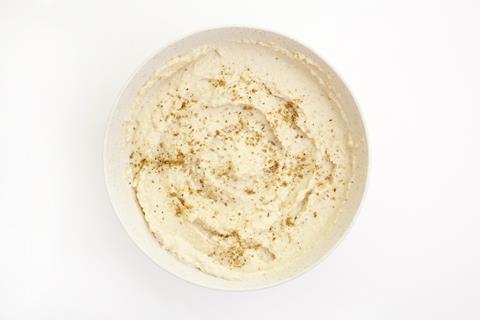Why food tastes worse when flying and the tricks we can use to add some flavour to our travels
Flavour is a multimodal experience. Drawing on all of our senses, weaving them together with our memories, emotions and environment it creates a complex tapestry imbued with the essence of a specific moment. These essences can range from nostalgic, joyful and fulfilling to deeply unsatisfying, frustrating and off-putting. Unfortunately for those of us who spend a lot of time travelling, commercial airlines face what is potentially the highest degree of difficulty in delivering deliciousness.
At the 10,000m cruising altitude of most commercial flights, the drastically lowered partial pressure of oxygen in the air would cause us to pass out instantly. To protect travellers, airline cabins are pressurised, bringing the perceived pressure of the cabin up to mimic the conditions felt at a much more tolerable 2400m or so. Unfortunately, this ‘altitude’ is still high enough to significantly reduce the saturation of oxygen in our blood, sometimes by several percent. This triggers a cascade of metabolic changes, resulting in drowsiness and the decreased sensitivity of our sensory machinery.

Muted senses
One of the senses most drastically affected by airline altitude is our sense of smell. Our thresholds of detection for many important food aroma compounds rise significantly, muting and even changing the perceived aroma character of everything from wine to meat. Our struggling olfactory machinery is put at a disadvantage not only by decreased sensitivity, but by lower concentrations of volatile aromas coming from our food as well. In perhaps the least delicious manifestation of Boyle’s law, reduced air pressure allows aromatic molecules to spread further apart, packing fewer stimuli into our depleted nasal cavities. As if this weren’t enough strain, the recirculation of the cabin air through filters that supply us with precious oxygen quickly dries out the nasal mucosa that normally shepherds aromas to our olfactory bulb.
When a head cold incapacitates our noses at sea level, our tastebuds can usually provide some solace, registering salty, sweet tastes found in comfort food. Since our sensory machinery for taste has nothing to do with volatile molecules, we might expect our tongue provide a similar solution to the dilemma of eating in the air, And yet it often makes matters worse. Our lower blood oxygen saturation at altitude, through some mechanism yet to be fully determined, has the effect of lowering the acuity of our taste receptors as well. Interestingly, these effects are highly selective and, infuriatingly, focused on the more ‘delicious’ tastes. And while satisfying saltiness and sweetness are reduced by as much as a third, the generally less agreeable tastes of bitter and sour remain resoundingly loud. These play important roles in most balanced, complex flavour profiles, but our impaired perception of flavour chemistry at altitude tends to create something akin to the orange juice after toothpaste paradox. Fruit feels bracingly acidic and under ripe; vegetables, coffee and alcohol seem extra bitter; and rich foods seem chronically underseasoned. Umami may be our taste saviour – its savouriness is weakened at altitude, but only by a small degree, allowing chefs to imbue our food with deliciousness without relying on obscene quantities of salt and sugar.
Recipe book: savoury houmous
Houmous is a delicious, virtually universal snack food that can also work in an aeroplane environment. This recipe has been modified to be slightly less sour and slightly more sweet, salty and umami than usual to make it more palatable in the air. That being said, I recommend adding miso to houmous regardless! Add a selection of spices to the recipe and enjoy with whatever your favourite crunchy dipping tool may be.
Ingredients
- 500g cooked chick peas
- 100g lemon juice
- 50g miso paste
- 5g salt
- 5-8g spices (sumac, paprika, cumin etc.)
- 50g olive oil
Instructions
1) In a food processor, blend the chick peas along with lemon, miso, salt, and the spices of your choice. Blend until it forms a smooth paste
2) Drizzle in olive oil while blending to form stable emulsion
3) Pack in a sealed container (in whatever quantity meets local airline restrictions) and enjoy
Airline ambiance
The chemistry and physiology of our senses plays a major role in souring our inflight dining experiences, and our psychology does little to come to our rescue. Over the past few decades, numerous consumer studies have shown that everything from the cheap, plastic tableware to the deafening drone of the engines has tangible ramifications for our enjoyment of airline meals. This ranges from reducing the perceived saltiness of a dish to lowering our impression of the financial value of the ingredients.
We need to overcome several logistical obstacles as well. Airlines need to embrace novel, innovative techniques to avoid the leathery, pale mush that results from traditional cooking retrofitted to accommodate airplane safety standards. They also need to update our food choices, moving away from the classical yet stagnant fare of the ‘golden age’ of 1950s air travel. The ‘airline’ cut of chicken is mostly boneless breast meat, which is ironically one of the pieces of meat least suited to surviving overcooking and the harsh, dry air of the cabin.
For the most part, airlines seem to have heard the rampant consumer complaints of the past few years, and are pushing to find solutions that fit within their razor-thin margins. In the meantime, our best bets for deliciousness at altitude is eating early in the flight before conditions have fully taken their toll; wearing noise-cancelling headphones or earplugs; using moisturising nasal spray and staying hydrated; and bringing our own snacks on board whenever possible.
Ali Bouzari is a culinary scientist and co-founder of Pilot R+D












No comments yet